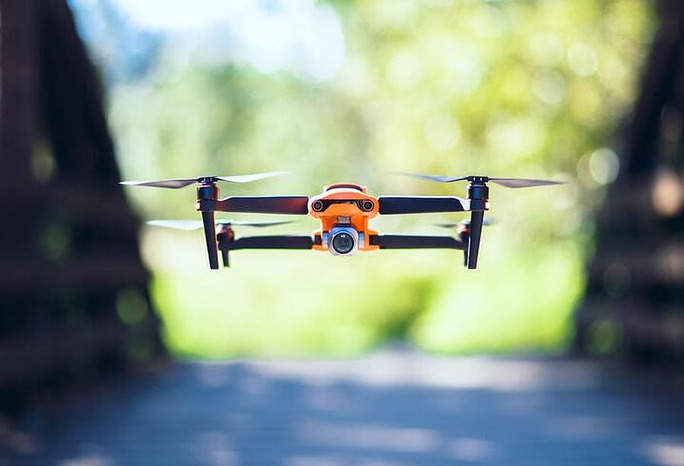In professional filmmaking and videography, drone shots are now a must-have for getting those amazing visuals from incredible angles. With continuous advancement, drones are becoming better at filming unexpected scenes. Be it a sweeping aerial view or dramatic close-ups, the perfect drone shot can turn an ordinary location into something extraordinary. If you’re a professional filmmaker or just starting as a videographer, getting a grasp of drone cinematography can expand your creative options. Here, we will discuss the five must-have cinematic drone shots that every pro should know. These drone shot ideas are sure to bring depth and emotion to any project. Read the article carefully and enrich your skills!
The Dynamic Roll
The dynamic roll is a visually striking technique that involves rotating the horizon line to create a dramatic effect. It’s a popular choice among professionals for enhancing action sequences or adding a surreal touch to footage.
Start by flying your drone above your subject. Gradually roll the camera to one side, keeping the subject in focus. For better control, adjust the roll speed settings to ensure a smooth and consistent motion. The key is to maintain steady flight while focusing on camera orientation.
This shot is ideal for emphasizing motion or chaos in your scene, making it a versatile option among the many types of drone shots available. When used strategically, it can transform a mundane sequence into something extraordinary.
The Fly-Through Shot
The fly-through shot is a staple in cinematic videography, known for its immersive effect that transports viewers into a scene. This involves navigating your drone through tight spaces, such as doorways, forest paths, or even between objects like buildings or trees.
To execute this shot, position your drone at the starting point of the path. Use manual control to guide it steadily through the desired area, keeping the camera angle consistent. Adjust your gimbal pitch speed to ensure smoother transitions when tilting the camera. Utilizing cinematic modes on your drone can also help reduce abrupt movements, making the shot more polished.
The Hyperlapse Shot
A hyper-lapse shot captures a series of time-lapse images while the drone moves along a set path, creating a smooth, dynamic effect that shows the passage of time with motion. This technique adds a cinematic and dramatic feel to aerial footage. It often showcases cityscapes, moving traffic, or natural landscapes.
To capture this shot, fly your drone along a pre-determined path while taking photos at regular intervals. Use waypoint navigation if available, as it ensures precise movements. Once you’ve collected the images, compile them into a video using editing software.
This advanced technique is a highlight among drone photography ideas, offering a cinematic result that’s hard to replicate with other equipment. While it requires patience and planning, the final outcome is worth the effort.
The Orbit Shot
The orbit shot is a classic yet powerful drone technique that involves flying in a perfect circle around a subject. It’s a go-to shot for showcasing buildings, monuments, or people, providing a sense of scale and drama.
To perform this shot, set your drone’s altitude and radius. Many modern drones feature an automatic orbit mode, making it easier to execute. For manual control, use the yaw stick and directional controls simultaneously to maintain a consistent circular motion around the subject.
This technique’s versatility makes it one of the most popular ideas for cinematic video shots. By mastering the orbit shot, you can add depth and perspective to your projects effortlessly.
The Chase Shot
The chase shot is an exhilarating way to capture motion, commonly used in action sequences or sports videography. This involves following a moving subject, such as a car, cyclist, or runner, while maintaining focus and steady flight.
Position your drone behind or slightly above the subject. Gradually match their speed, ensuring your camera remains locked on them. Many drones offer tracking features like ActiveTrack, simplifying the process by automating subject focus and movement adjustments.
Incorporating the chase shot into your drone flying video adds energy and excitement, making it a must-have for any professional’s repertoire.
Making Shots Easier to Execute
While these techniques require practice, there are several ways to simplify their execution:
Utilize Intelligent Flight Modes: Features like ActiveTrack, Waypoints, and Orbit Mode can automate complex movements, reducing the learning curve.
Adjust Camera Settings: Lowering the gimbal pitch speed ensures smoother tilts while tweaking frame rates and resolution enhances overall quality.
Pre-Plan Flight Paths: Use drone apps or pre-set waypoints to ensure precise movements, especially for intricate shots like hyper lapses and fly-throughs.
Common Drone Videography Concerns
Professionals often wonder, “Do drones record sound?” or “How can I ensure smooth footage in windy conditions?” Generally, drones do not record usable audio because the noise from their propellers and motors is too loud. Similarly, wind can introduce instability in your shots, but using drones with advanced stabilization features or flying during calmer weather can help with this issue.
Consider adding sound effects or ambient audio during post-production to enhance your footage further. For instance, pairing a fly-through shot with natural soundscapes can significantly elevate the immersive quality of your video.
By following these tips, you’ll learn how to take shots easier while maintaining professional standards.
Closing Words
Getting familiar with each of these five cinematic drone shots is a great way to upgrade your cinematic video projects. Don’t forget the key to improving your drone videography lies in constant practice, experimentation, and refinement. So, explore, hone your abilities, and create visuals that resonate deeply.

